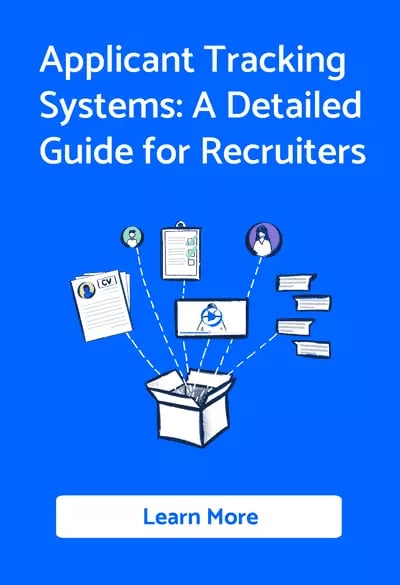Networking on LinkedIn can be a game-changer for startups and SMBs looking to connect with industry leaders, potential partners, or future employees. However, crafting the right message is essential. A powerful LinkedIn message doesn’t just open doors—it builds relationships.
This article will explore ten LinkedIn message strategies that can enhance your networking efforts and improve your chances of meaningful engagement. Each message has a specific use case, ensuring that your outreach is tailored, respectful, and impactful.
For more help in building a successful network, explore these 10 LinkedIn networking message templates.
Why LinkedIn messaging is key to successful networking
LinkedIn is the go-to platform for professional networking. It hosts over 800 million users worldwide, many of whom are actively engaged in discussions around business growth, career opportunities, and industry trends. But with so many people vying for attention, how do you stand out?
The key lies in crafting a message that resonates with the recipient. Cold, impersonal outreach doesn’t work anymore. Today’s professionals prefer personalized, thoughtful messages that add value. This is particularly important for SMB founders and operational managers who are looking to grow their network strategically.
Well-structured LinkedIn messages can lead to collaboration, job opportunities, mentorship, or even new business partnerships. In fact, 61% of professionals say that regular interaction with their network helped them secure opportunities that they would have otherwise missed. With that in mind, let’s dive into ten powerful LinkedIn messages that can take your networking to the next level.
1. The connection request message
When sending a connection request, avoid the generic "I'd like to add you to my network" message. Instead, tailor your outreach by mentioning a shared interest, mutual connection, or specific reason why you're reaching out. This helps you stand out among the sea of requests your recipient likely receives.
Example:
"Hi [Name], I came across your profile and noticed we both work in the [industry]. I’m particularly interested in how you’re driving innovation at [their company] and would love to connect to exchange ideas."
This approach shows that you’ve taken the time to research the person, which can increase the chances of them accepting your request.
2. The value offer message
If you’re reaching out to someone you’ve never met, offering immediate value can make all the difference. Whether you’re sharing an article, offering insight, or giving advice, showing that you’re here to contribute rather than just take sets a positive tone.
Example:
"Hi [Name], I saw your post about [topic] and thought you might find this article on [related topic] useful. I’d love to hear your thoughts on it. Let’s connect!"
Providing value right off the bat shows that you’re not just there to fill your connection list but genuinely want to engage.
3. The mutual connection introduction
If you’ve been introduced through a mutual connection, you can reference that introduction in your message. This helps build immediate trust and opens the conversation up more naturally.
Example:
"Hi [Name], [mutual connection’s name] recommended I reach out to you. I’ve heard great things about the work you’re doing at [their company], and I’d love to connect and discuss how our businesses might collaborate."
This message immediately signals that you come with some credibility, making the recipient more likely to engage.
For more tips on creative ways to engage with potential connections during networking, check out this guide from GoHire.
4. The follow-up after an event
Networking events, both online and offline, are great ways to meet potential collaborators or business partners. The key is following up while the event is still fresh in everyone’s mind.
Example:
"Hi [Name], I really enjoyed your presentation at [event name]. Your insights into [topic] were incredibly valuable, and I’d love to connect and keep the conversation going!"
Following up after an event solidifies your connection and shows that you’re genuinely interested in continuing the discussion.
5. The common ground message
Finding common ground—whether it’s attending the same event, being part of the same industry, or sharing a mutual connection—can create a natural opportunity for engagement.
Example:
"Hi [Name], I noticed we both attended [event name] and share a mutual interest in [industry/topic]. I’d love to connect and explore ways we might collaborate or exchange ideas."
People are more likely to respond when they feel there’s a shared experience or interest.
6. The compliment and ask
Flattery can go a long way, but only when it’s genuine. Complimenting someone’s work or achievements before making a request can make the person more receptive to what you’re asking.
Example:
"Hi [Name], I’ve been following your work at [company] for a while, and I’m really impressed by your recent project on [specific achievement]. I’d love to connect and learn more about your approach."
Compliments that are specific and thoughtful, rather than vague or insincere, make people more willing to engage.
7. The career advice request
Asking for advice or mentorship can open doors to long-lasting relationships. Most people enjoy sharing their expertise, particularly if they feel it will be genuinely appreciated.
Example:
"Hi [Name], I’m currently navigating [specific career challenge] and would love your advice on how to best approach it. I’ve admired your work in [industry], and any insights you can share would be greatly appreciated!"
Asking for advice instead of directly asking for a favour can lead to more meaningful conversations.
8. The job inquiry message
If you’re interested in working at a company but don’t see any open positions, it’s perfectly fine to reach out and express your interest.
Example:
"Hi [Name], I’ve been following [their company] and am really inspired by the work you’re doing in [specific area]. I wanted to reach out to express my interest in future opportunities within your team. Let’s connect!"
This shows initiative and enthusiasm, which many employers appreciate. Be sure to personalise the message to avoid sounding like you’re sending a blanket inquiry.
Learn more about how to find top candidates for niche jobs in this guide from GoHire.
9. The referral request
If you’ve built a relationship with someone and feel comfortable enough to ask for a referral, do so respectfully. A direct and honest approach can work wonders.
Example:
"Hi [Name], I hope you’re doing well. I’ve been following [company] for a while, and I noticed there’s a role opening for [specific role]. If you feel comfortable, I’d appreciate it if you could refer me. Let’s discuss further if needed!"
This message is straightforward and shows you respect their time and professional relationship.
10. The thanks and keep-in-touch message
When someone helps you, always express gratitude. It leaves a lasting positive impression and keeps the door open for future interactions.
Example:
"Hi [Name], I wanted to thank you for your advice regarding [topic]. It was incredibly helpful, and I’ll definitely implement your suggestions. Let’s stay in touch!"
A simple thank you can make a significant impact and ensure that you remain on the recipient’s radar for future opportunities.
For more LinkedIn messaging strategies, check out this GoHire guide.
How can I make my LinkedIn message stand out?
Personalisation is key. Avoid sending generic messages and instead craft a message that references the recipient’s work, achievements, or shared interests.
What is the best way to follow up on a LinkedIn connection request?
If they accept your connection, follow up with a simple thank you message and suggest a topic for future discussion or collaboration.
How do I ask for a referral on LinkedIn?
If you’ve built a relationship with someone, be polite and direct. Ensure that your request is specific, and be respectful of their time.
Should I send a message with every LinkedIn connection request?
Yes, adding a short, personalised message increases the chances of your connection request being accepted.
How long should my LinkedIn messages be?
Keep them concise but thoughtful. Around 2-4 sentences is ideal for most initial outreach messages.






